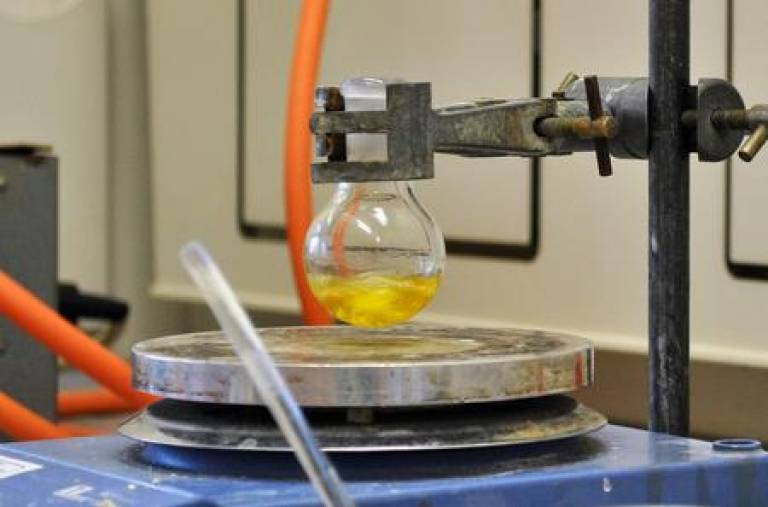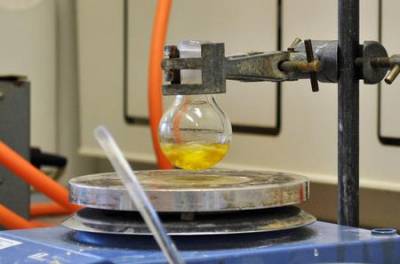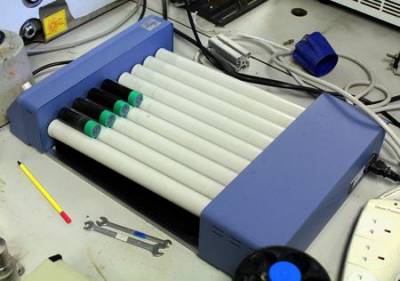Mixing things up
14 October 2013

Mixing and grinding samples is important in many chemistry experiments, but is time consuming and labour intensive when done by hand. Hasok Chang, in research carried out while he was Professor of History and Philosophy of Science at UCL, uncovered evidence of an experiment in the 18th century which involved four weeks of shaking, all done by hand.
Scientists today have it much easier, with a range of devices to help. The photo above shows a magnetic stirrer: a rotating magnetic field coming from the equipment makes a small metal stirring device spin rapidly in the flask above, and can keep the liquid moving indefinitely.
This magnetic stirrer is being used for undergraduate teaching in UCL's Turner Laboratory.
Another approach, below, is the roller-mixer.
The grey cylinders roll and rock, and samples left in sealed containers get gently agitated. In the photo above, the apparatus is being used to grind up material: inside the sealed containers, scientists have put ball bearings, which slowly grind a sample to a fine powder over a period of hours or even days.
In this case, the equipment is being used by UCL's Clean Materials Technology Group, in order to make fine powders for use in catalytic applications.
Photo credit: O. Usher (UCL MAPS)
Links
High resolution image
Magnetic stirrer
Roller mixer
These images can be reproduced freely providing the source is credited
 Close
Close






